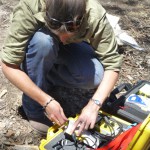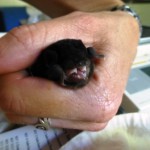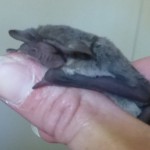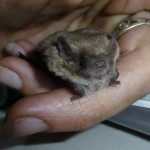Who’s been flying through? An update on the Community Bat Survey project
The Community Bat Survey project has been up and running since January this year, with great results. So far we have surveyed eighteen different properties using Anabat recorders across the Upper South East in a range of different habitats. The Anabats have been out at each property over multiple nights and with 2 – 3 Anabats per property, we have achieved 124 Anabat survey nights so far. As previously explained in the newly produced project webpage, Anabats are remote recording devices that record the ultrasonic echolocation (like sonar) calls that microbats make when they are feeding. Each bat species has a slightly different call frequency and call shape, which allows us to identify the bat species by looking at the call on the computer. The echolocation calls of microbats are above our hearing range (except for one species), which is just as well, as given the number of microbats in our sky each night a quiet night would be unheard of!
The results have been fantastic with each property recording between 5 and 10 different types of microbats! While the intact native vegetation is most likely to have the highest number of different species, the Anabats have also shown the importance of isolated paddock trees and shelter belts, recording at least five different types of microbat. Currently we have recorded the following bats:
- White-striped Mastiff Bat (Anabat)
- Southern Freetail Bat (Anabat and harp trap)
- Gould’s Wattled Bat (Anabat and harp trap)
- Chocolate Wattled Bat (Anabat and harp trap)
- Lesser Long-eared Bat (Anabat and harp trap)
- Western Broad-nose Bat (Anabat and harp trap)
- Large Forest Bat (Anabat and harp trap)
- Little Forest Bat (Anabat and harp trap)
- Southern Forest Bat (Anabat and harp trap)
- Southern Bent-wing Bat (Anabat)
This is a great diversity, with only five of the other known South East microbats not recorded on this survey. Of the five unrecorded species, we would be unlikely to record three of the species, as the current surveys have occurred north of their known range in the Lower South East. To help confirm the species diversity that we found remotely on the Anabats we undertook a week of harp trapping at three key sites in the survey area. Again the surveys were very successful recording eight different species (see above). It is not surprising that we did not catch the White-striped Mastiff Bat or Southern Bentwing Bat, as the White-striped Mastiff Bat flies higher than the harp traps and the Southern Bentwing Bat (critically endangered) tends to be slightly further south during this time of year. However, we often heard the White-striped Mastiff Bat calling while surveying, so have no doubt of their presence!
To find out more about what we found and how harp traps work come and visit us at the Eaglehawk Open Day (info can be found here on another blog this week) on Sunday the 18th of May. I’ll be doing a bat walk & talk through to our harp traps where hopefully I will have some of our local bats to show you.
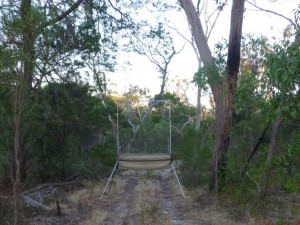
A harp trap set up in a fly way at Padthaway Conservation Park


